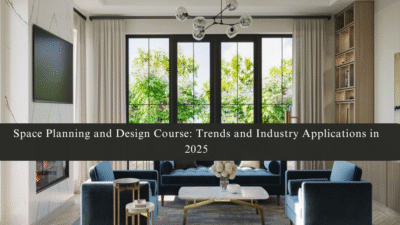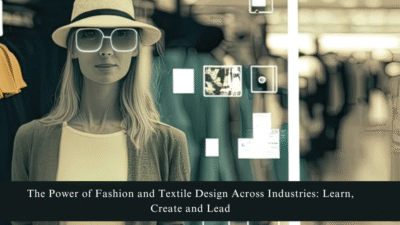Design today isn’t just about aesthetics—it’s about strategy, psychology, and communication. From branding to learning environments, thoughtful design influences how we think, feel, and make decisions. In this blog, we’ll explore how concepts like color psychology design, and disciplines such as fashion designing course, interior design, and graphic design are shaping industries like business, management, and education—along with practical suggestions and career scope.
The Science Behind Color: Why Color Psychology Matters in Design
Color psychology design is the study of how colors affect perceptions and behaviors. Brands, designers, and educators use color intentionally to evoke emotions or influence user actions.
- In business, blue often communicates trust (think: PayPal, LinkedIn), while red suggests urgency or excitement.
- In education, calming tones like green and soft blues are used to reduce stress and improve concentration.
- In interior design, warm tones can make hospitality spaces more inviting, while cooler shades create focus zones in workplaces.
Understanding color psychology design helps professionals create environments and visuals that speak before any words are read or heard.
Suggestion: Aspiring designers should study how different cultures interpret color—this is crucial for working on global projects.
Career Scope Through Design-Focused Courses
The creative industry is expanding—and it needs skilled designers who understand both form and function. Whether you’re passionate about fashion, spatial aesthetics, or digital visuals, each design discipline opens doors across industries.
1. Fashion Designing Course
A fashion designing course is more than learning how to sketch or sew. It teaches students how to tell stories through fabric, trends, and silhouettes. Fashion designers today collaborate with technology, sustainability experts, and marketing teams to innovate.
Scope & Opportunities:
- Fashion stylist or merchandiser
- Costume designer for film/theatre
- Sustainable fashion innovator
- Textile designer for retail or interiors
Fashion intersects with business through branding, e-commerce, and lifestyle innovation—making it relevant across multiple industries.
2. Interior Design
Interior design shapes how people feel in a space. It balances beauty with function to create environments that support well-being, productivity, or relaxation.
Opportunities include:
- Designing commercial workspaces that enhance focus and collaboration
- Hospitality design for hotels, restaurants, and resorts
- Exhibition or retail space planning
- Residential design for smart or sustainable homes
Interior design is widely used in education (classroom layouts), healthcare (healing environments), and management (creating efficient offices). It’s no longer just about décor—it’s about user experience.
3. Graphic Design
In the digital age, graphic design is the visual heartbeat of most industries. From mobile apps to billboards, good design communicates ideas instantly and memorably.
Scope & Roles:
- Brand identity and logo design
- Social media content and digital campaigns
- UI/UX design for websites and apps
- Motion graphics for advertising or explainer videos
Graphic design is key in business strategy, marketing, product packaging, and even education materials like e-learning modules and textbooks.
Suggestion: Learn tools like Adobe Creative Suite, Figma, or Canva. Combine these skills with an understanding of color, typography, and audience psychology to stand out.
Design Across Industries: Practical Uses and Impact
Design today isn’t a siloed skill—it’s interdisciplinary. Here’s how design thinking is making waves across different sectors:
📊 Business & Management
- Logos and brand identity via graphic design
- Retail layout and product presentation via interior design
- Product packaging strategies using color psychology design
🏫 Education
- Learning environments enhanced through interior design
- Educational visuals (infographics, digital content) created with graphic design
- Uniform and identity development from fashion designing course knowledge
🛍 Retail & Marketing
- Brand consistency and emotion through color psychology design
- Store interiors optimized using interior design
- Trend-focused campaigns driven by fashion design
🎥 Entertainment & Media
- Costumes and styling from fashion design
- Set design and visual cues via interior design
- Posters, trailers, and online promotions via graphic design
Tip: The most successful creatives are those who understand how their design decisions align with user behavior and business goals.
Suggestions for Aspiring Creatives
- Start small: Observe how color, space, and style affect your environment.
- Build a portfolio early—even personal projects matter.
- Learn from real-world brands: Study how companies use visuals to tell stories.
- Stay updated: Design trends evolve—stay inspired by global creators.
Most importantly, don’t just learn what to design. Learn why people connect with it.
Final Thoughts
Whether you’re planning to take a fashion designing course, explore graphic design, or dive into interior design, the creative world is full of opportunities—across industries you might not have even considered. With a solid understanding of color psychology design and user behavior, your ideas can influence business, learning, and culture itself.
Design isn’t just about creating—it’s about connecting. And in today’s world, that connection is everything.



